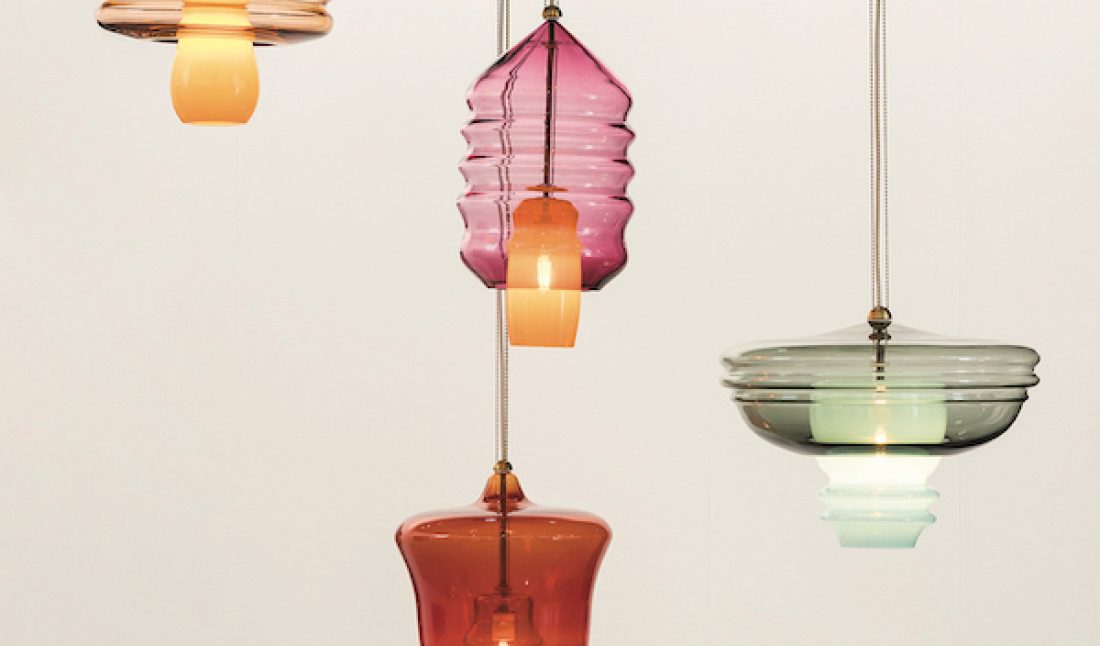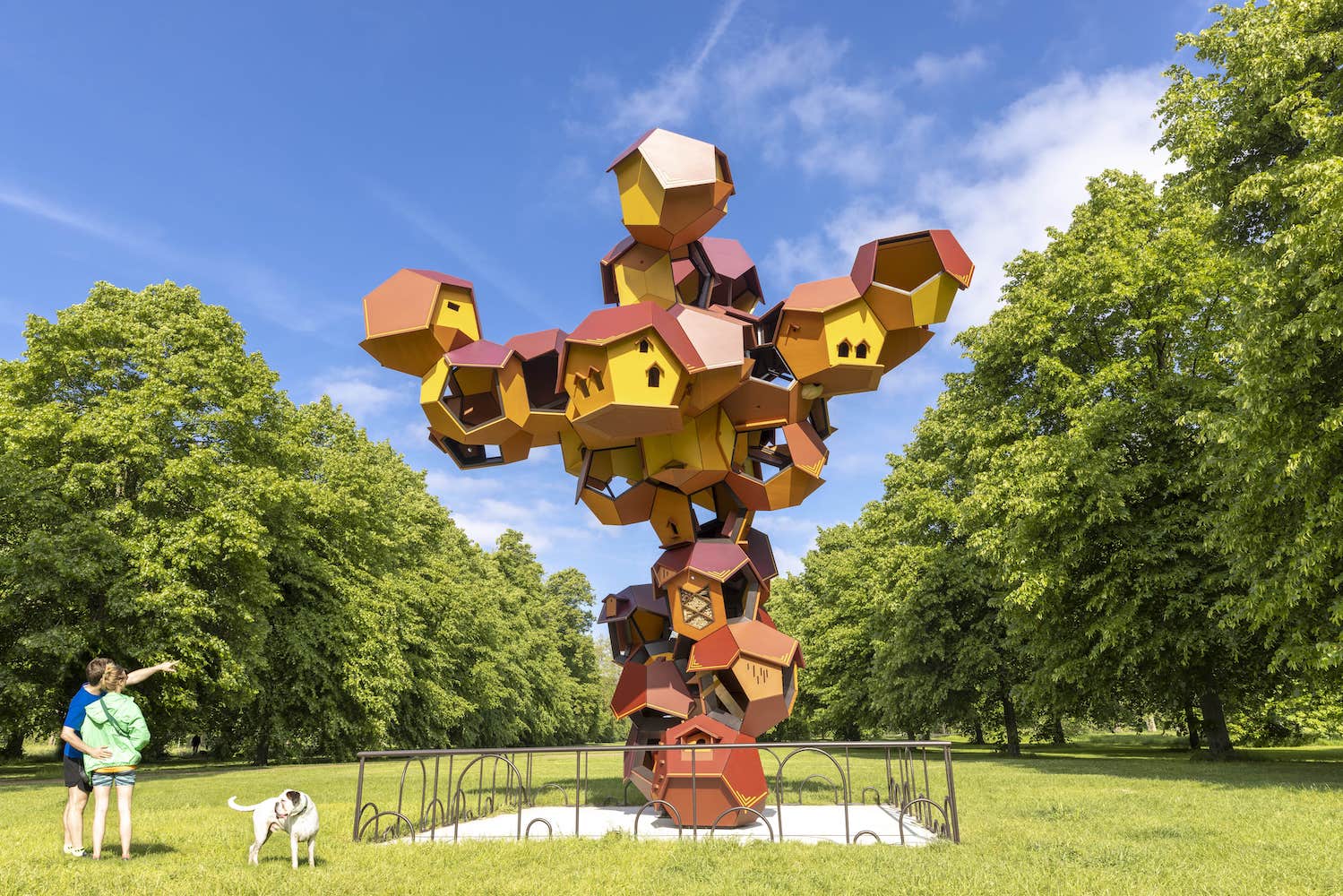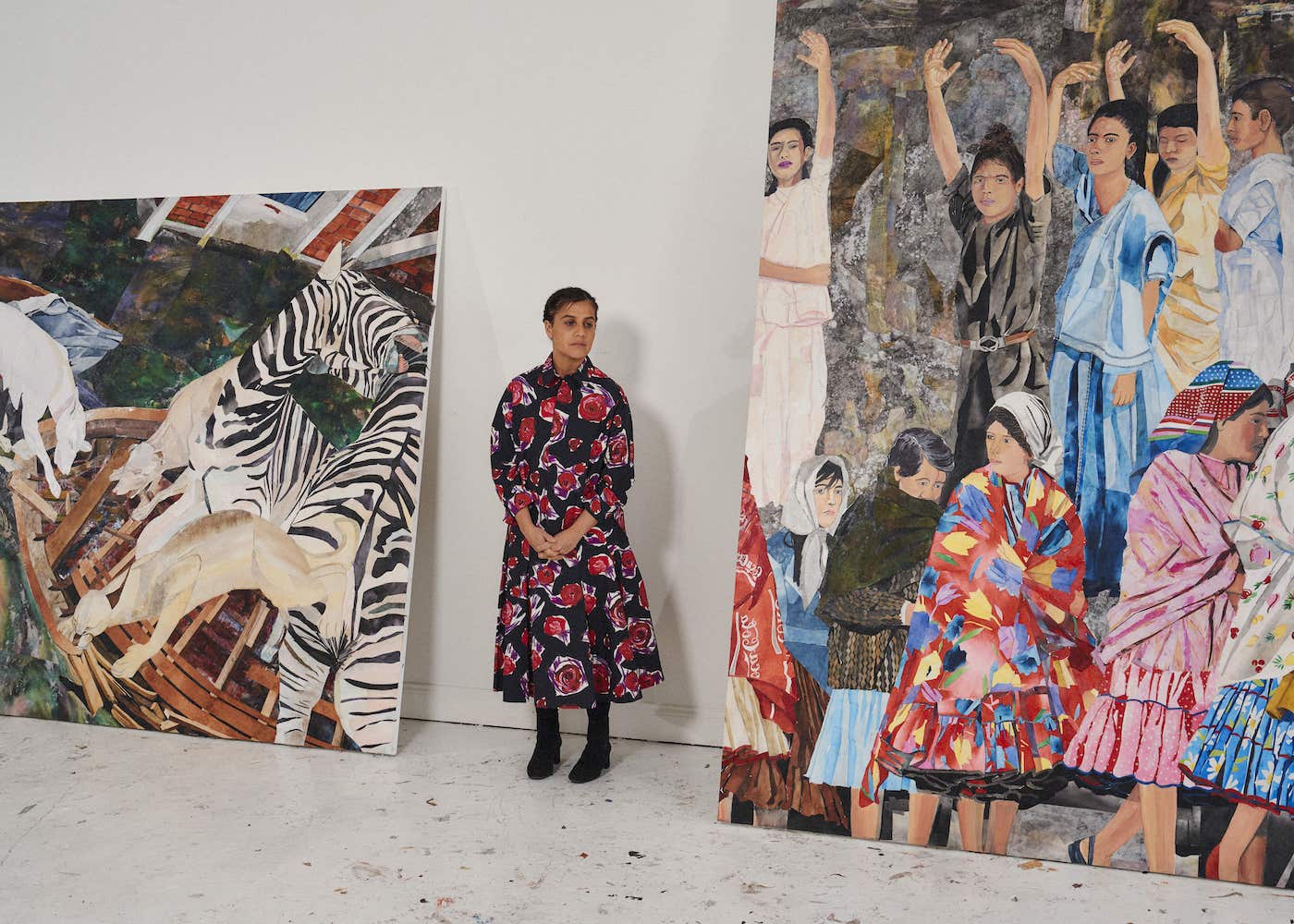Jorge Pardo Creates Art Encounters
Jorge Pardo’s exhibition “JP@SCAD” at SCAD Museum of Art was on view February 28 to July 17. Over one hundred feet long, it filled the narrow gallery with hand-blown glass pendant lamps suspended from the ceiling. Below their colorful glow stood a large table made of wood panels, intricately carved in patterns inspired by mangrove roots. On the table was a unique tablecloth that was digitally printed and collaged with images of paintings from the Cuban-American artist’s concurrent show at neugerriemschneider in Berlin, open through August 19.
The dynamic installation guides the viewer’s gaze and body through the room. It’s at once elusive, light, and alluring, while anchored by a central weighty, lengthy object. The varying use of color and material is a signature for Pardo’s multifaceted practice. His works shown in spaces like Dia Chelsea, L’Arlatan, the University of Houston, Pinacoteca de São Paulo, and Petzel Gallery blur the lines between fine art and function, as well as the distinctions between architecture, design, and contemporary art. Home furnishings are treated with purpose and pizzazz, transforming them into artworks with multiple meanings. Where they’re presented and who views them is ultimately what alters their meaning. Pardo, who lives between New York City and Merida, Mexico, recently spoke with Whitewall about creating his latest installation and where his works will be on view next.
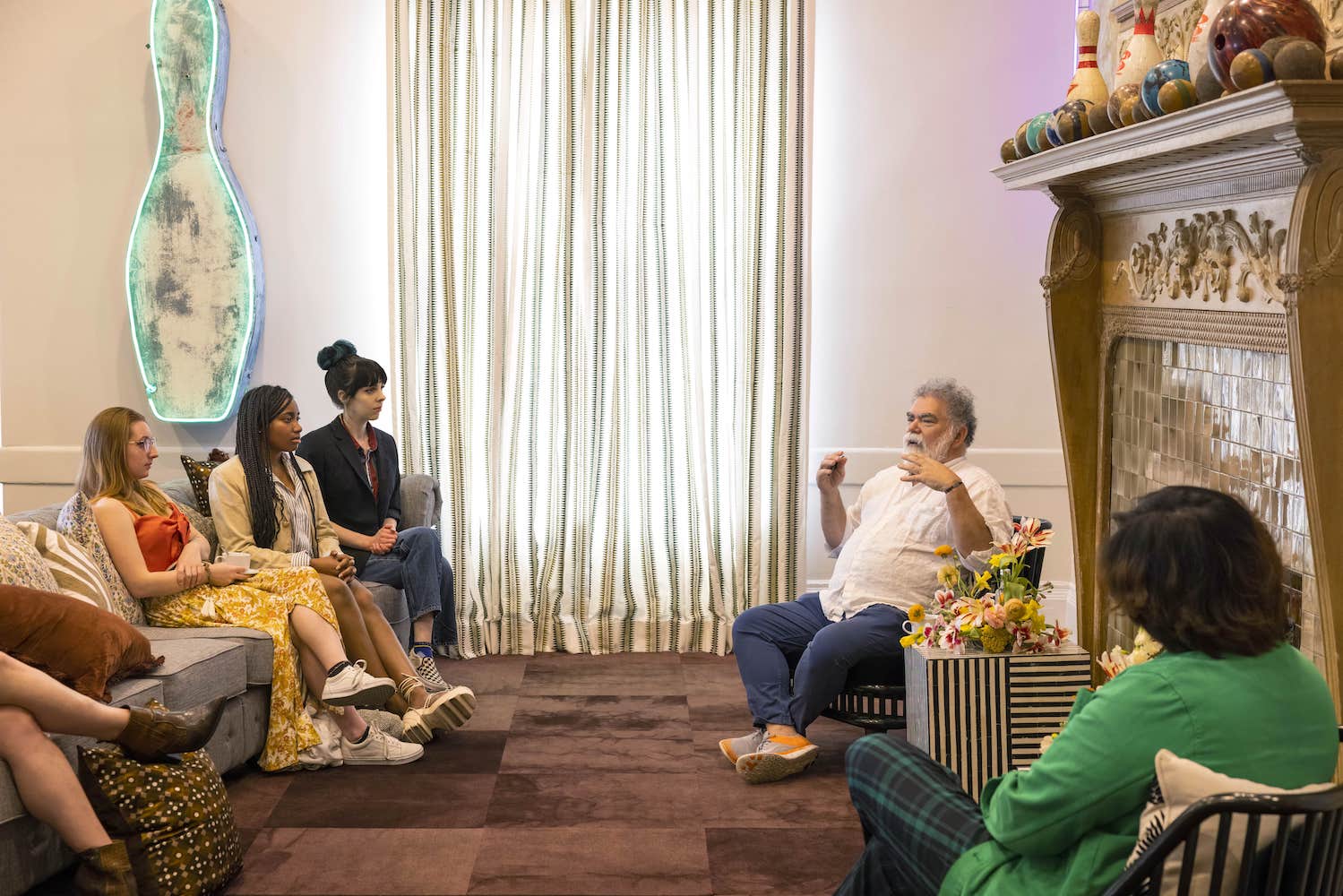 Jorge Pardo at the deFINEart Coffee Talk, courtesy of SCAD.
Jorge Pardo at the deFINEart Coffee Talk, courtesy of SCAD.
“Artists are the only people in the world whose only social contract is to show you something.”—Jorge Pardo
WHITEWALL: You’ve been working as an artist for over three decades. When did you know you wanted to be an artist?
JORGE PARDO: I didn’t realize I was going to be an artist until college at the University of Illinois. I was in the premed program, which I was not very happy in. I took painting as an elective, and it changed my life. There was a teacher there, Susan Sensemann, and she changed my life. She asked me at the end of the semester, “Jorge, what are you going to do with your life?” And I was like, “I don’t know.” I was 19 or 20. She said, “You should be an artist!” And I never looked back.
As a kid, I always liked to make things, but I didn’t understand that that interest could parlay into being an artist. I didn’t know what being an artist was. I grew up in a middle-class family; we never went to museums. I was a nutty, creative kid, but I wasn’t an artsy kid. How I became an artist is a lot like how I became an American. They’re both somewhat processes of assimilation.
I always thought the most interesting thing about all this is that artists are the only people in the world whose only social contract is to show you something. There aren’t many practices or professions like that. What you encounter in a gallery is endlessly possible. I was always attracted to that. I wasn’t really interested in interdisciplinary problems; I was interested in what an exhibition could be. How you can get to the problems and insight through a show—objects, paintings, or a sequence of how it all plays out.
WW: What do you consider when creating works for different spaces, like a museum or a gallery, or even a school like SCAD?
JP: The SCAD show was driven by the scale of that space. I thought it would be interesting to make something very long because the space is strange. I don’t think it’s difficult, but many might think that because it’s narrow, about two to three hundred feet long. I wanted something that plays out in that space. The show is very simple. It’s a tablecloth, an image on the table, and a group of lamps that follow you through the process of walking one hundred feet. To do that walk, there has to be enough visual material and prompts.
I use simple techniques, like considering the ceiling, the middle ground, then the floor. Everything is addressed in terms of how to measure the space with your body, but maybe not the most conventional way. There are color relationships that start to play out, and pace time as you move through things. For instance, the tablecloth is basically paintings from an upcoming show in Berlin that opens in a month. I thought, “Wouldn’t it be interesting to take an exhibition and turn it into a tablecloth?” It’s also not literal, because the promenade, which the show becomes, is very different than the way to consume paintings, rather than them being on a wall or something. I want to test the images’ abilities to perform in different ways.
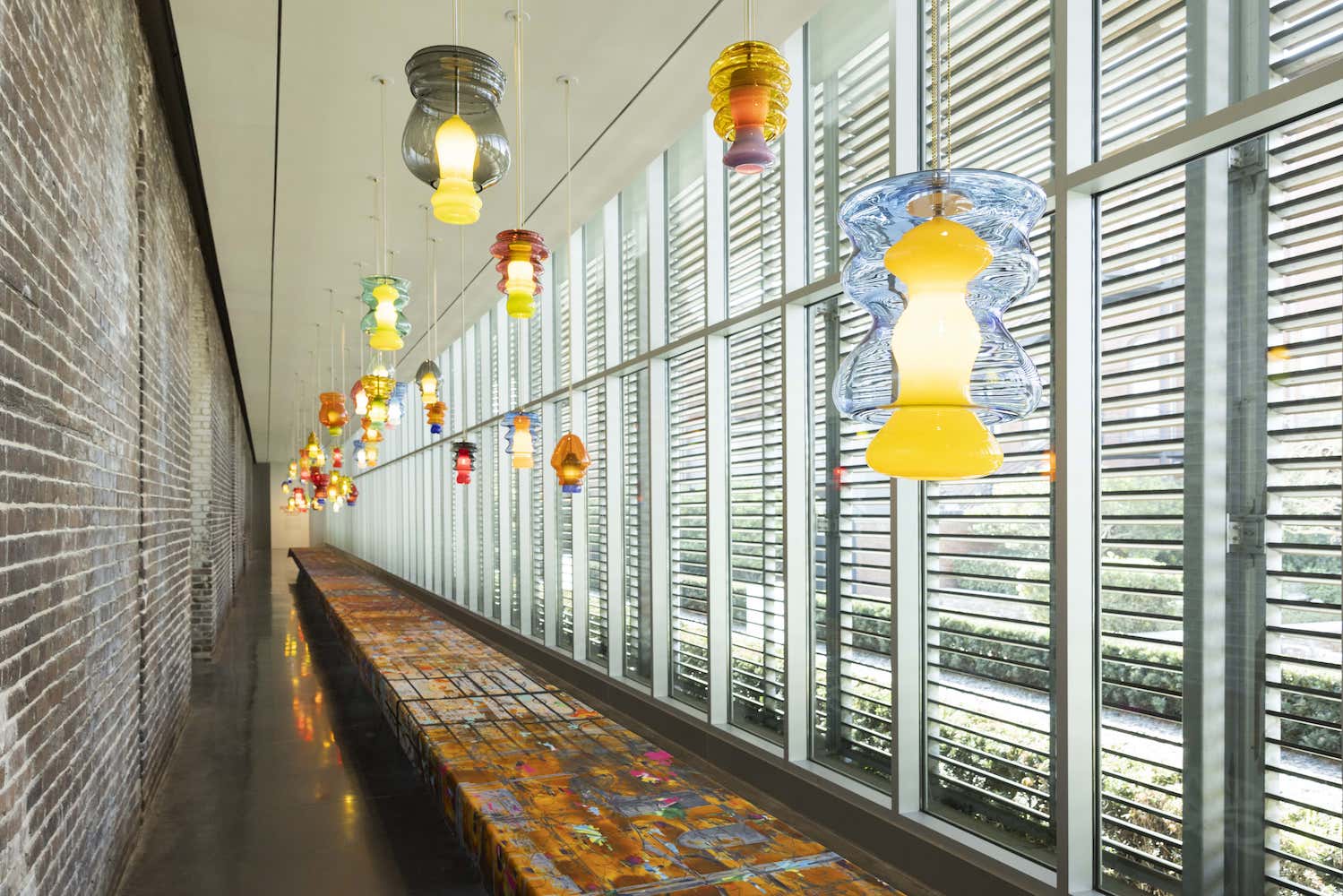 Courtesy of SCAD.
Courtesy of SCAD.
Location Determines the Nature of Jorge Pardo’s Works
WW: Do you feel your works take on different meaning depending on where or how they’re shown?
JP: Oh, yeah. They have to. Specificity is involuntary. I don’t think it’s anything anybody can control. I’m really interested in that, and seeing what happens when things move from one place to another—especially when I don’t do anything and it just happens. I’ve always had this idea that when I make work, I want to set something in play and I want something to see. That something isn’t just what I make. It becomes what I make when people view it. The viewer has always been something that constructs the work, in a way.
WW: For “JP@SCAD,” how were you considering the viewer?
JP: What I really found interesting about the museum at SCAD is that it’s primarily a pedagogues’ space. It’s within a school. And the school’s in a city where it has a very prominent presence. I really like that. I wasn’t making work for students, but I understood and really liked that these things would sort of be used to teach. That gives it a different characteristic for the context of the work.
I wasn’t thinking that the work was pedagogical; I was more interested in the work being in a pedagogical space. I was thinking more selfishly, “What does this mean for the work? What kind of pedestal is that for the work?”
WW: How were the pieces created?
JP: The glass lamps are hand-blown in a very rudimentary way because they’re spun and blown. They’re radial. It’s limited because there are only so many things you can do, but we came up with like 10 to 20 shapes and ended up with about nine. Then you play out all the different colors that you can do, given the number of the group. Each lamp initiates some kind of color relationship that I didn’t necessarily pick. I put forth the parameters for that to happen, but there can be a lot of variety there. So those are the kinds of games I play there.
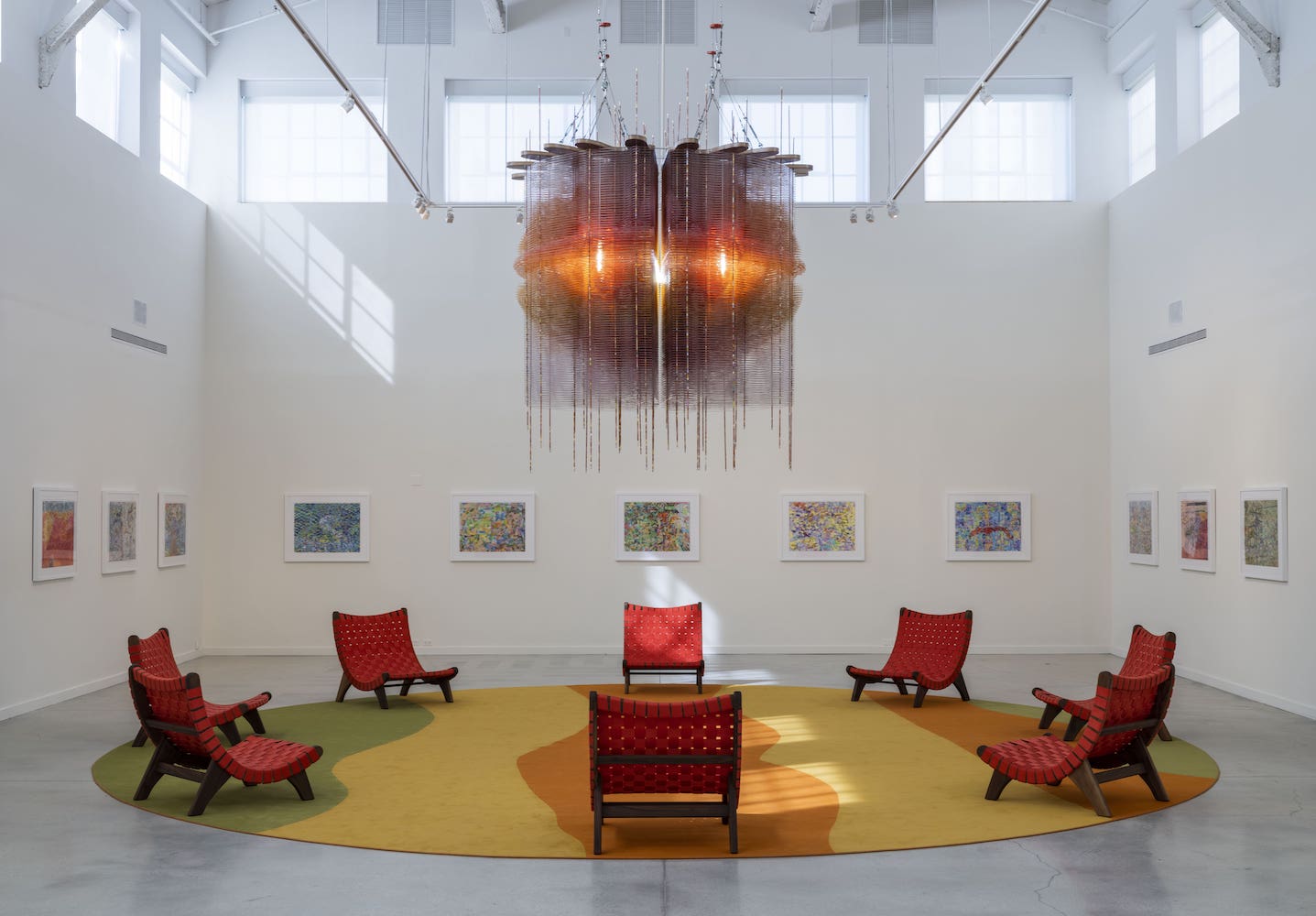 “Jorge Pardo: Mongrel,” 2021, installation view, November 7, 2021–May 1, 2022; photo by Oriol Tarridas, © Museum of Art and Design at MDC.
“Jorge Pardo: Mongrel,” 2021, installation view, November 7, 2021–May 1, 2022; photo by Oriol Tarridas, © Museum of Art and Design at MDC.
Where to See Jorge Pardo’s Work Next
WW: We heard you’re working on a project for the U.S. consulate in Merida. What does that entail?
JP: It’s an installation, a permanent work, in the conference area of the consulate. It’s an interesting place. Someone called me up from the state department and asked if I wanted to do a work for it—and it was in Merida. I have my studio in Merida. I thought it was great because then the people in my studio could have something in the city of Merida, since 99 percent of what we make is shipped out.
I thought it was such an interesting place because it’s so odd to have work there. It’s a ceiling work, 20 light works that kind of swim through the space. It’s getting installed later this year. We’ve been working on it for three years.
WW: What are you working on next?
JP: We’re working on a large light installation for Johns Hopkins, which opens next year. We have a commission with a private client in Cabo. We just started a commission for a building in Miami. We have a show in Korea next February and likely one in Cologne next year. We’re always a few years ahead.
I never thought I’d be in the position I’m in now. I didn’t know how to imagine that as a kid, because it wasn’t the landscape I grew up in. But now I get to play for a living. Serious play!
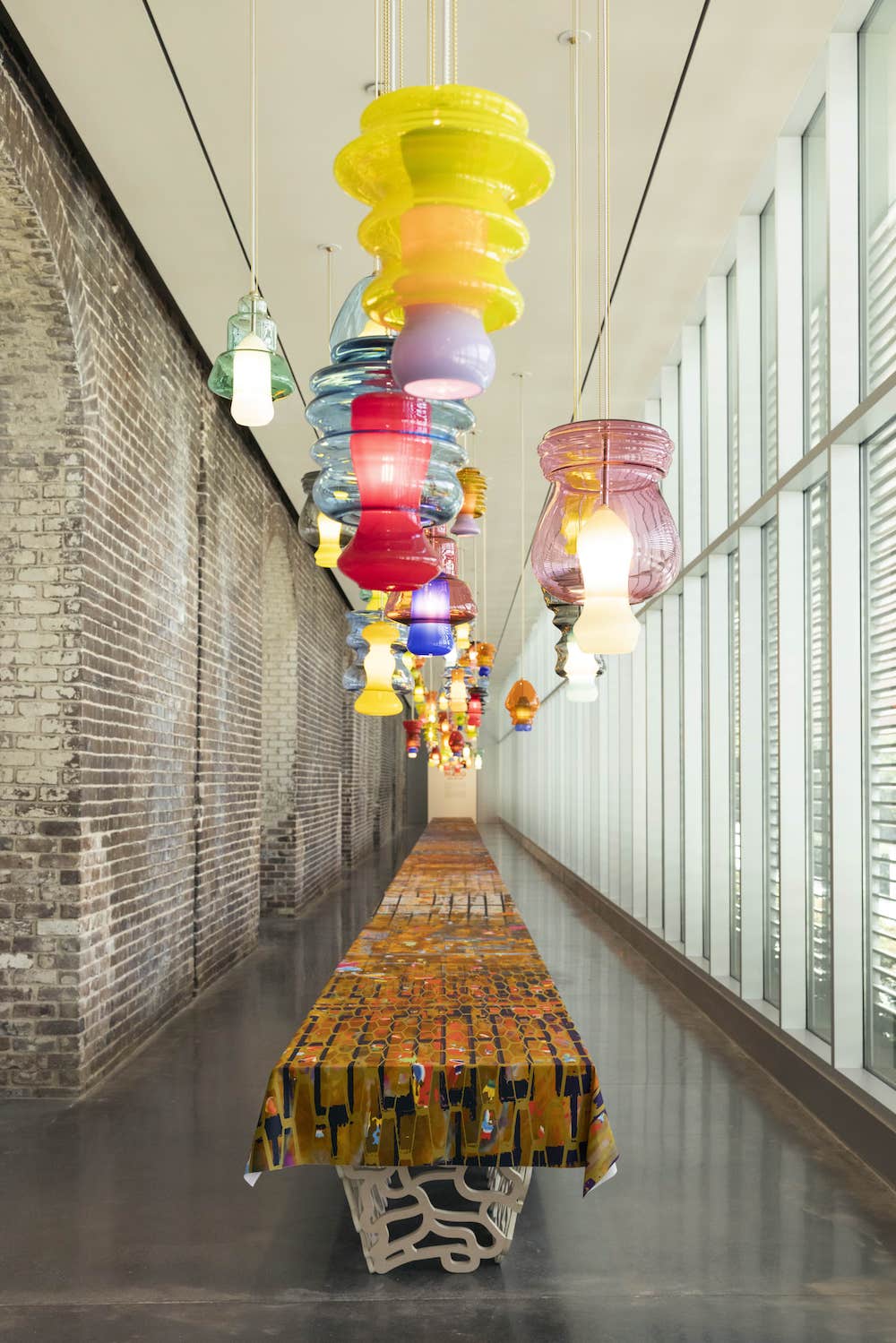 Courtesy of SCAD.
Courtesy of SCAD.
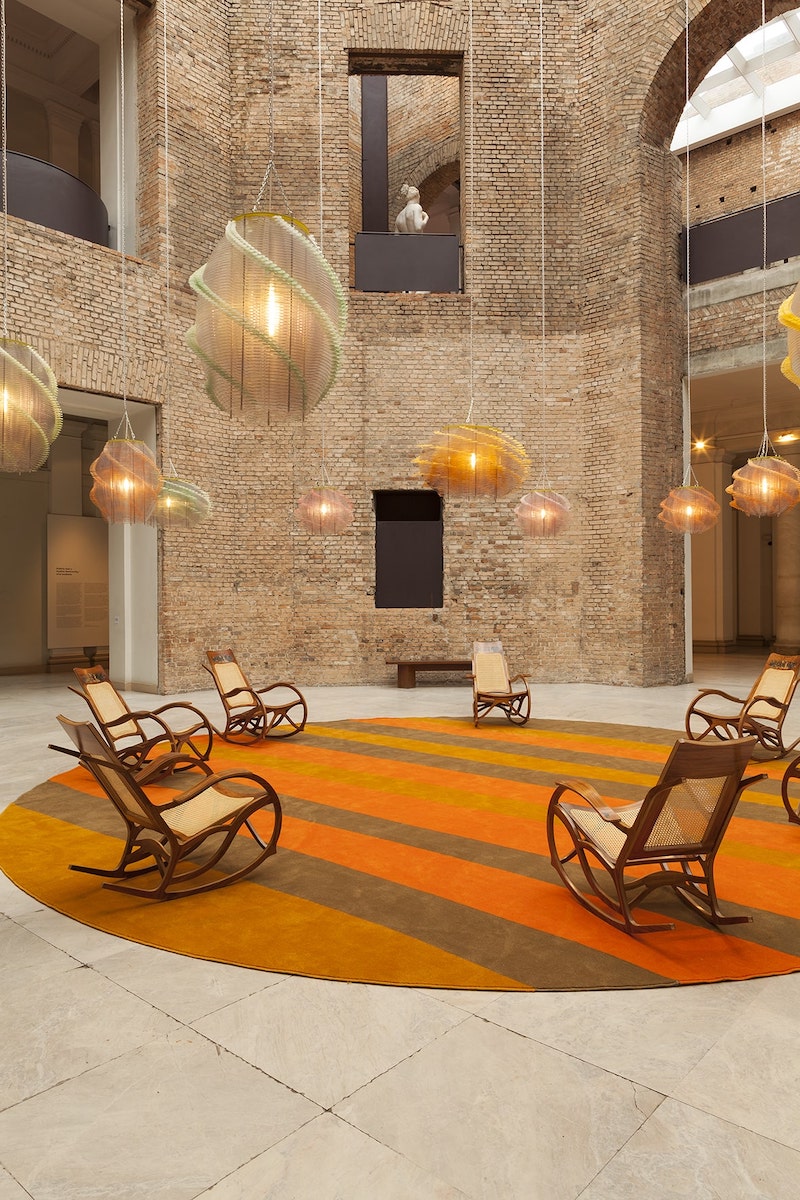 Installation view, “Jorge Pardo: Flamboyant at the Pinacoteca de São Paulo,” © Jorge Pardo, courtesy of the artist and Pinacoteca de São Paulo.
Installation view, “Jorge Pardo: Flamboyant at the Pinacoteca de São Paulo,” © Jorge Pardo, courtesy of the artist and Pinacoteca de São Paulo.






